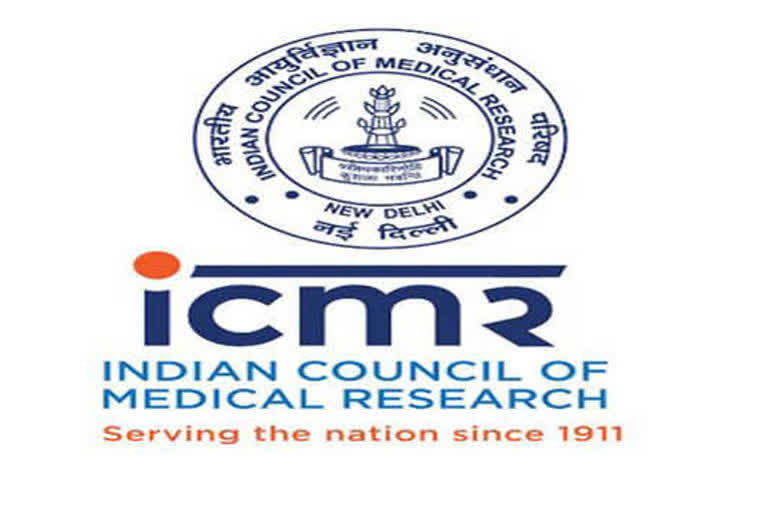New Delhi: At a time when the Union Ministry Health and Family Welfare (MoHFW) has been emphasizing on avoiding use of smokeless tobacco (SLT) products as a precautionary measure to stop COVID-19, a white paper on smokeless tobacco and women’s health in India shows significant SLT use among women and young girls.
The white paper brought out by India’s apex medical research institute (ICMR) has found that India shares more than three-quarters of the global burden of smokeless tobacco consumption. “Tobacco use in India has been largely viewed as a male-dominant behaviour. However, evidence from medical, social and behavioural sciences show significant SLT use among women and young girls,” the ICMR said.
In a letter recently written to the chief secretaries of States and UTs, the health ministry asked to prohibit the use and spitting of smokeless tobacco in public places to prevent the spread of coronavirus.
“Chewing smokeless tobacco products, paan masala and areca nut (supari) increases the production of saliva followed by a very strong urge to spit. Spitting in public places could enhance the spread of the COVID-19 virus,” the ministry had said in the letter.
Significantly, 28 States and UTs have banned the use of smokeless tobacco products and spitting in public places in view of COVID-19 epidemic.
Despite the evidence of its harms and consequences, there is a high prevalence of SLT use in many populations across the globe; however, low- and middle-income countries (LMICs) share the largest burden, the ICMR said.
According to the Global Adult Tobacco Survey (GATS), some of the countries with a high prevalence of SLT use include India, Bangladesh, Egypt, Nigeria and the Philippines. However, among the global 248 million SLT users, 232 million belong to India and Bangladesh alone, wherein India alone carries more than 83 per cent of the global burden.
Read: Halifax to Texas: Largest non-nuclear explosions in history
Evidence demonstrates that increasing use of SLT has not just been reported among adult males, but also among children, teenagers, women of reproductive age and immigrants of South Asia wherever they have migrated and settled.
In India, according to the latest GATS survey (2016-2017), 12.8 per cent women aged 15 years and above were consuming any form of SLT. In absolute numbers, this corresponds to nearly 58.2 million women consuming any form of SLT in India. The SLT use among women was over 10 per cent in 16 States of India. Almost all the states in the Northeast top the list of states with the highest percentage of SLT use followed by states like Odisha, Chhattisgarh, West Bengal among others.
Although SLT use has declined from 18.4 per cent (GATS 2009-2010) to 12.8 per cent (GATS 2016-2017) among women, a relative increase in SLT use was evident in nine States of India. Nearly, 17 per cent of women in India initiated SLT use before the age of 15, much higher than men (11%).
Among the various SLT product types, women in India consume betel quid with tobacco (4.5%), oral tobacco (4.3%) and khaini (4.2%), followed by gutka (2.7%) predominantly.
The use of SLT among pregnant women and exposure of foetuses to chemicals and hazards present in SLT products, is leading to many preventable morbidities and adverse outcomes. Moreover, the National Family Health Survey (2015-2016) further suggests that nearly 5.0 per cent of lactating women in India consume SLT, which may directly harm neonatal health and nutrition.
In a study conducted among married women at Mumbai, SLT use was found to be attributed for reducing stress, providing pleasure, associated companionship with peers at the workplace and in the neighbourhood, increasing energy for workload and suppressing hunger when dietary requirements were not met. Further, SLT use is often initiated at an early age as children and youth are often exposed to it when involved in purchase activities for their mothers and other older family members.
Among women, SLT has been associated with the risk of oral and pharyngeal cancers, cancer of the gums and buccal mucosa, esophageal cancer, upper aero-digestive tract cancer (UADT), cervical cancer, ischemic heart disease (IHD) and osteoporosis.
The ICMR in its white-paper, however, suggested few recommendations to stop the use of SLT including robust data collection and dissemination, development of awareness materials and effective health safety warnings, understanding social-embeddedness of use, and taxation and demand reduction.
Read: SC issues notice to Centre, NHRC over custodial deaths



